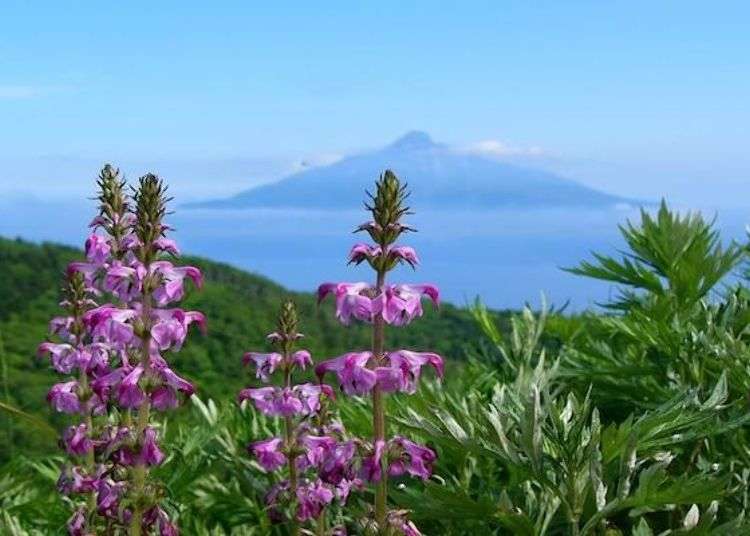
Rebun Island in Hokkaido is also known as the “floating island of flowers” and is a garden paradise rising from sea level to alpine heights. I had a professional guide take me trekking on a course resplendent with unforgettable views of flowers, Mt. Rishiri, the sea, and unusual rock formations.
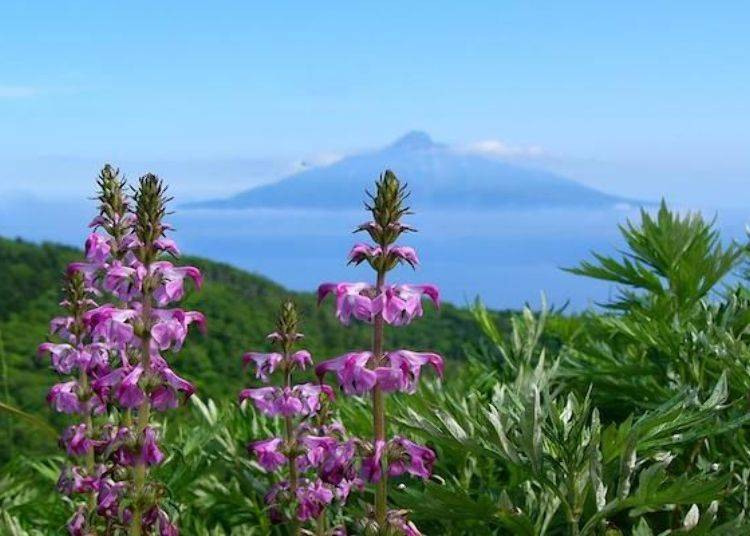
Best time to visit the flower paradise of Rebun Island: July and early September
Rebun Island is located about 60 kilometers west of Wakkanai, a town situated on the tip of Hokkaido. It, together with Rishiri Island, are two small islands floating in the Sea of Japan.
The island can only be accessed by ship from Wakkanai, a trip that takes about one hour and 55 minutes; it takes about 40 to 45 minutes from Rishiri.
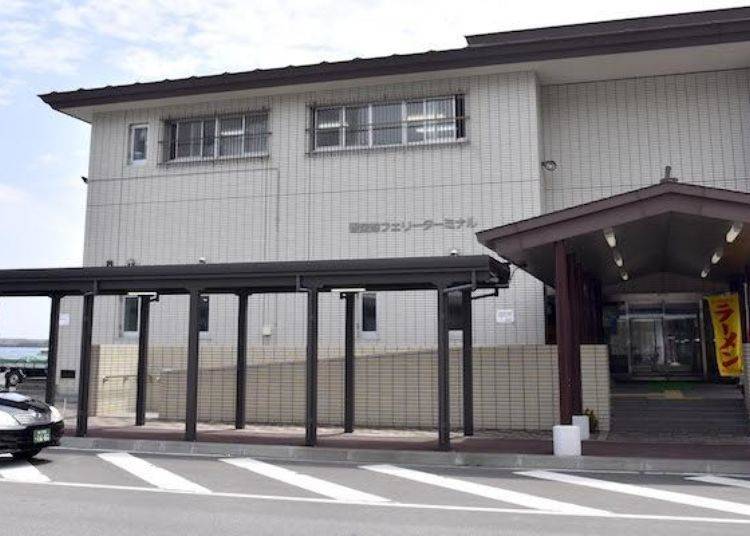
About 70 percent of the island is designated as a national park, and upon arrival there, the vast expanse of natural beauty is indeed impressive. Everywhere on the island between April and September, more than 300 varieties of flowers bloom.
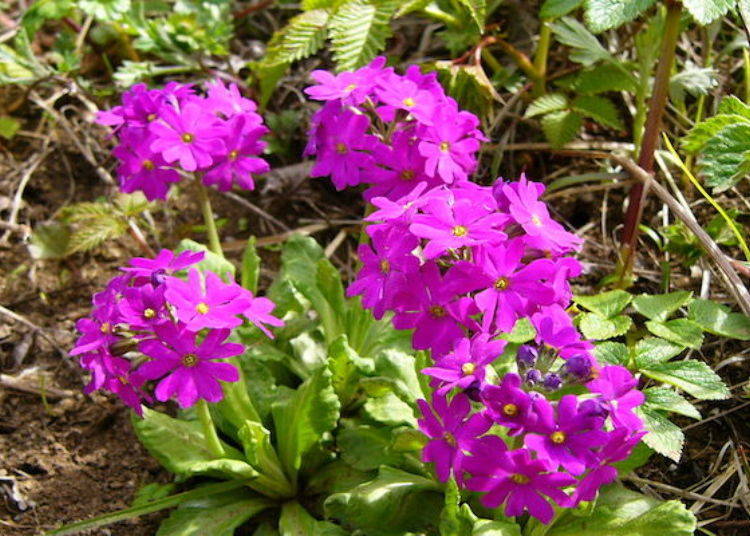
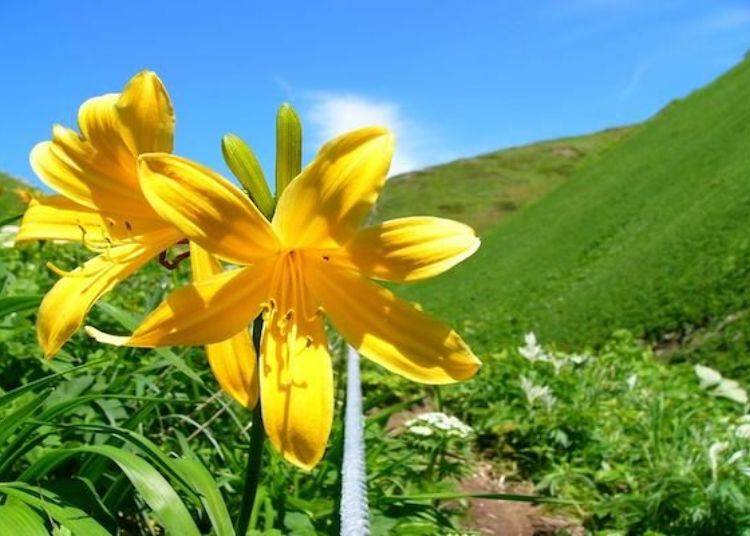

Different types of flowers bloom about every two weeks. From the end of June, there is an explosion of colorful blossoms leading up to the peak which is from July to early September.
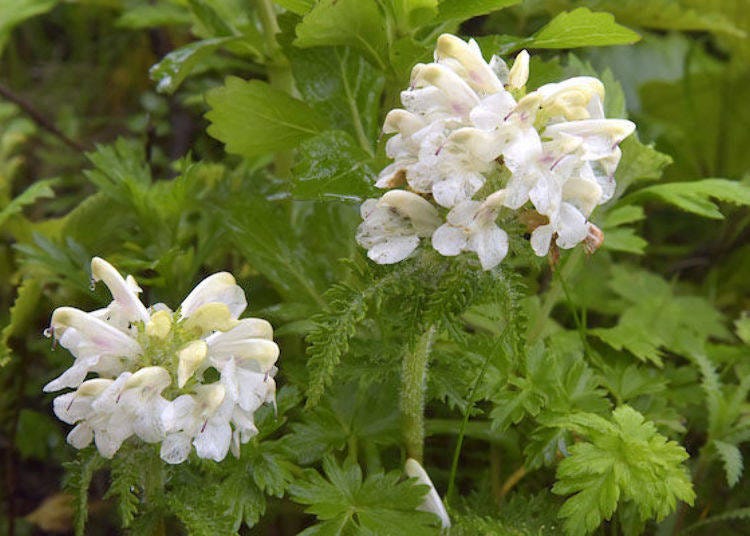
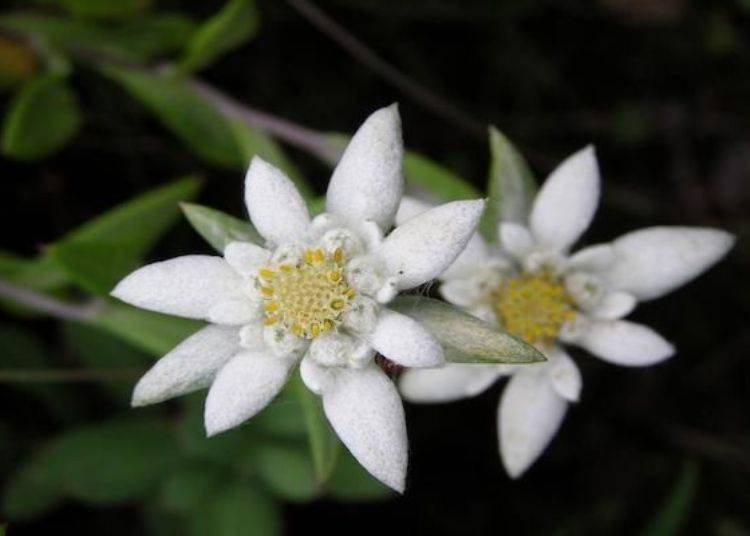
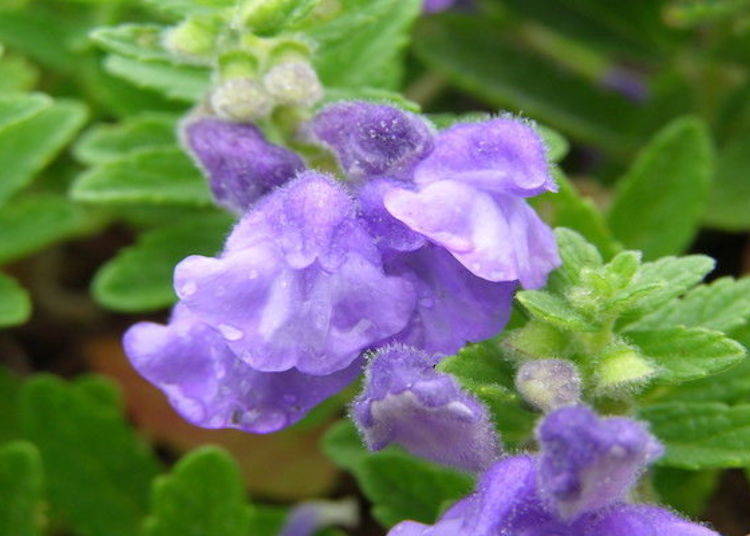
The best way to enjoy viewing flowers while trekking is in the company of a professional guide who can explain everything. I did just that this time by requesting the Hana Guide Club to provide me with a guide who is an expert in such matters and certified by the Rebun Tourist Association.
There are group tour packages, but for our reporting team, we selected the Private Guide Plan. The cost for half a day (4 hours) for two people is 15,000 yen, including tax. Ms. Emi Sasaka, a Rishiri Island and Rebun Island Flower Trekking Guide, accompanied us.
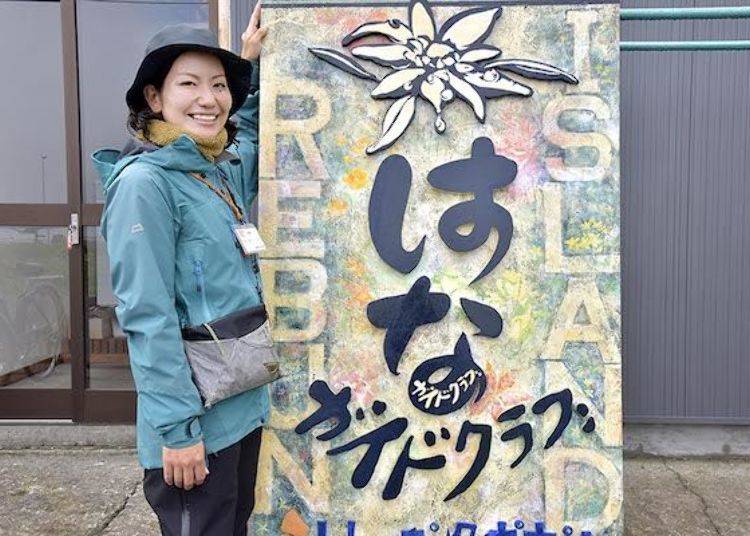
What is attractive about this plan is that you can set the time and course to fit your stamina and the flowers you would like to see. We expressed a wish to visit places someone new to trekking might choose where it would be possible to see many flowers in bloom. The course that was selected was a 3-kilometer course that went from the Momoiwa Observatory to Kinbai Valley and back again.
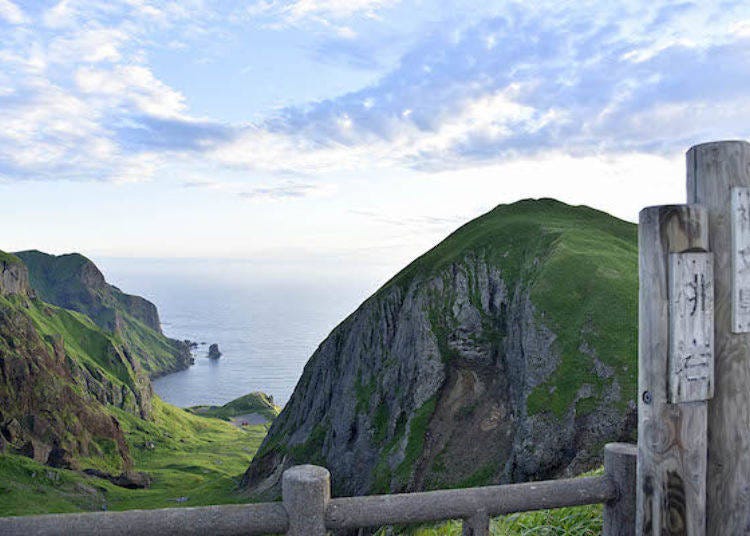
The path known as Flower Road is a trekking course having the most flowers growing on the island. To the left is Mt. Rishiri and to the right the ocean with many wondrous rock formations. Just listening to the explanations by our guide set my heart aflutter. We decided on this course because the distance was just right!
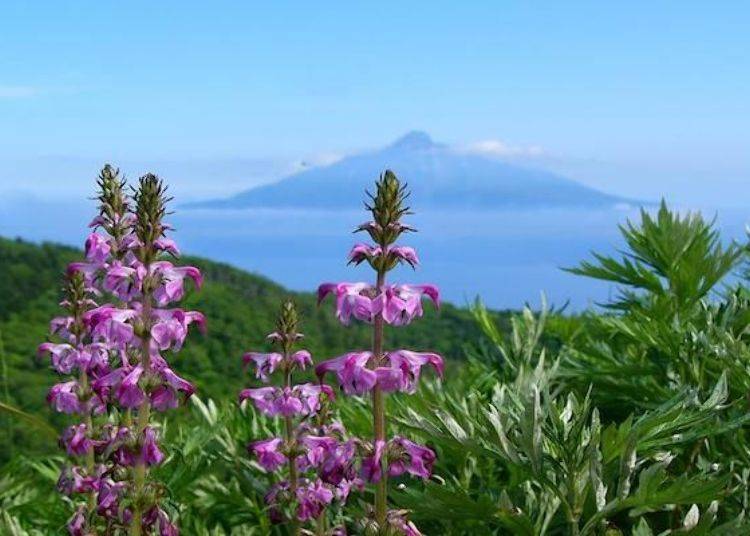
The items necessary for trekking are thick socks, trekking shoes, quick-drying short-sleeve or long-sleeve T-shirts, trekking pants that go down to the ankle, a day bag, warm clothes, rain gear, hat, liquid refreshment, candy or other sweets for energy, gloves, garbage bag, and sunscreen lotion.
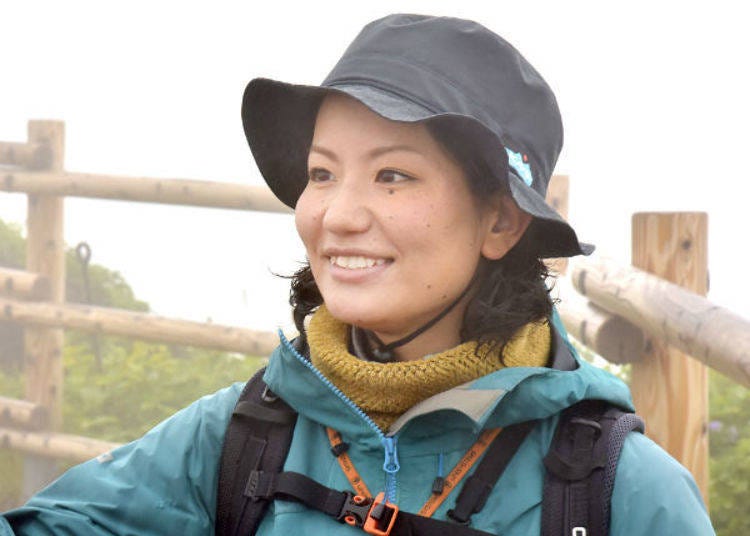
Be sure to remember to bring rain gear. The weather on Rebun Island can often be rainy, foggy, and windy, so rain gear is essential in order to enjoy the trek. Umbrellas are no good because of the strong winds, so the best option is good rain gear.
The guide’s explanations double the enjoyment!
You can meet your guide for the day either at the Kafukako Ferry Terminal or the lobby of the Hotel Rebun. From there you will move on to the starting point by the local bus. After finishing the trek, you can walk back to the meeting place without taking a bus.
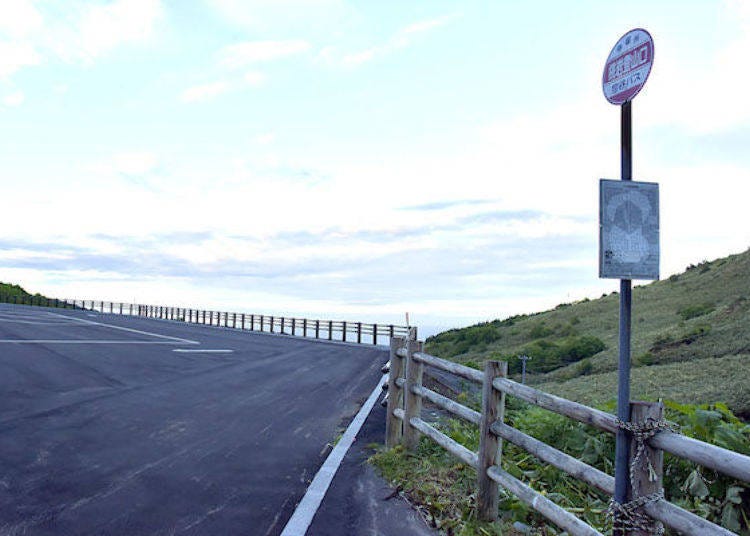
When you walk walking around the Momoiwa Observatory as we did this time, get on the bus in front of the Kafukako ferry terminal and ride it to Momoiwa Tozan-guchi, the last stop. From there, it is about a 1.2-kilometer walk uphill to the Momoiwa Observatory and takes about 40 to 60 minutes.
The trek along Flower Road begins from the Momoiwa Observatory.
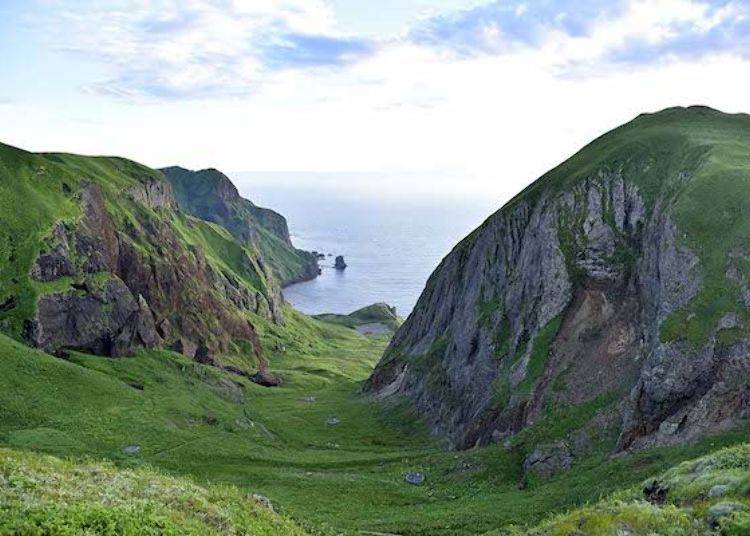
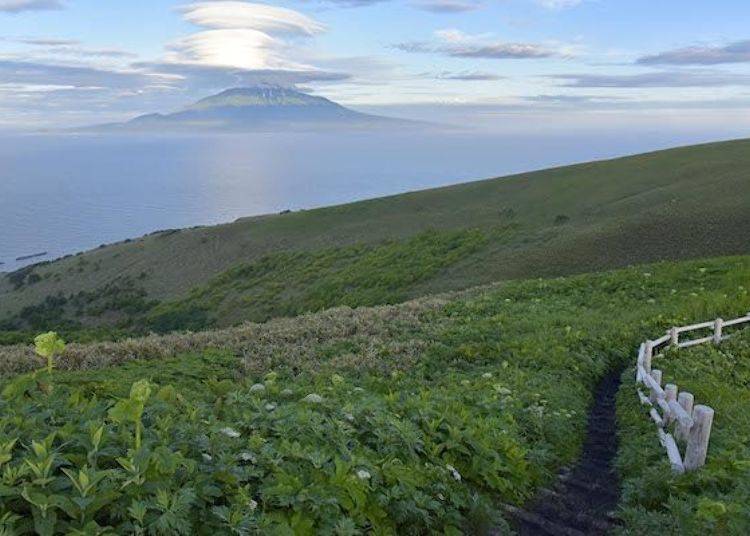
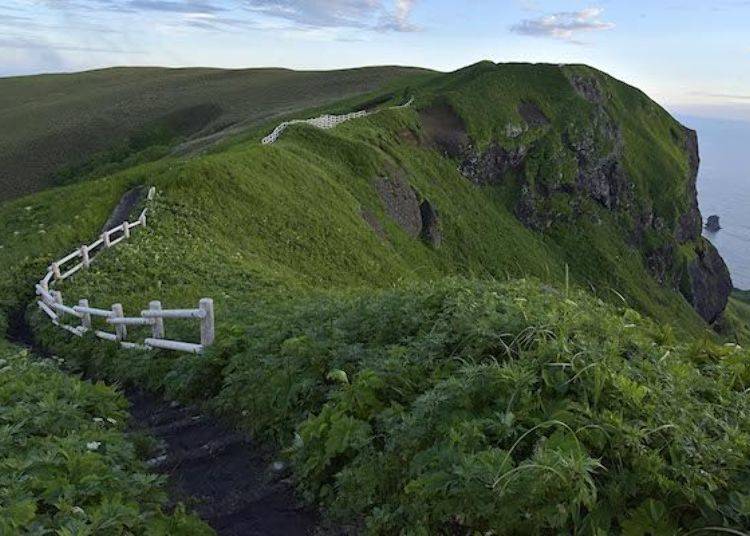
The photo is not as good as I would have liked because on the day we visited there was a light rain and fog which is often the case on Rebun Island between June and July.
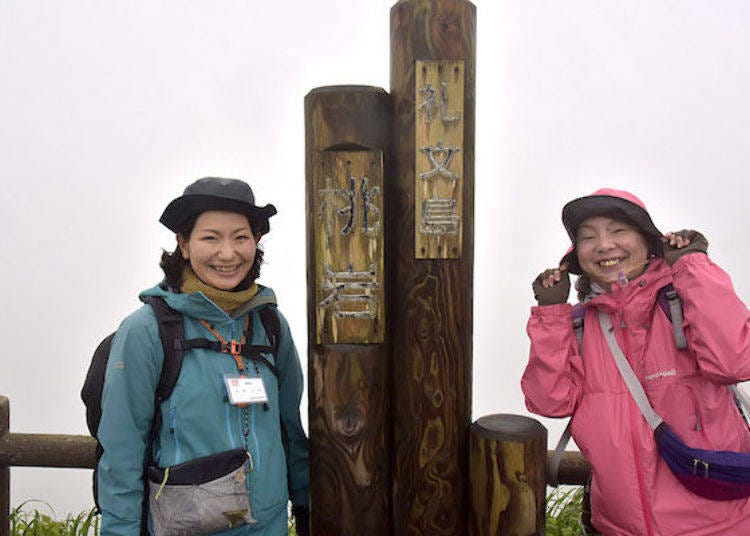
Although we could not enjoy the view, there were many lovely flowers in bloom on each side of the road.
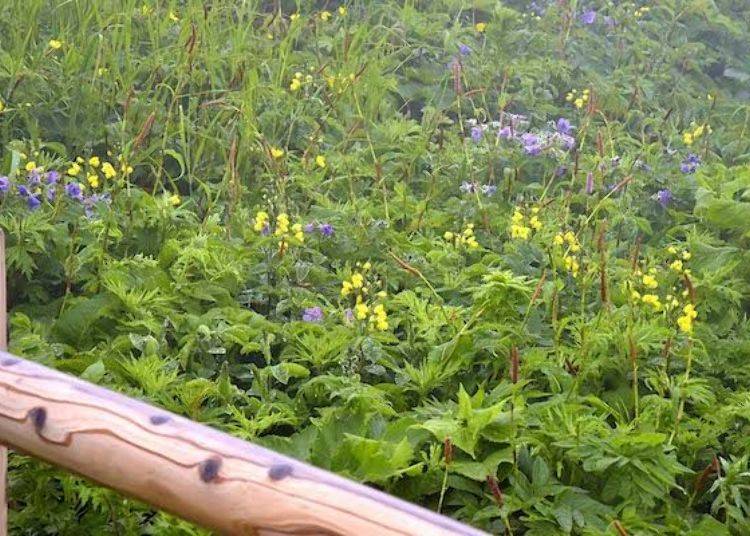
Many trekkers are amazed to see flowers in bloom everywhere, which on the island of Honshu only bloom at elevations above 2,000 meters.
When you think of it that way, this experience on Rebun Island is indeed most rewarding!
Amidst the chirping of birds, Ms. Sasaka first introduced the Ibukitoranoo (Common bistort), which blooms early.
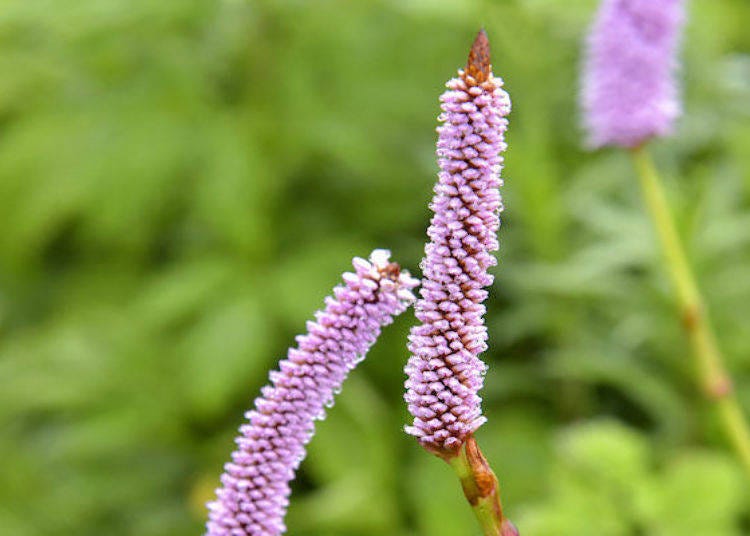
“This flower has a pungent order that belies its cute appearance. Rather like that of old socks (lol),” explains Ms. Sasaka. Curious, I got up close but could smell nothing, perhaps because it rained. Was I lucky?
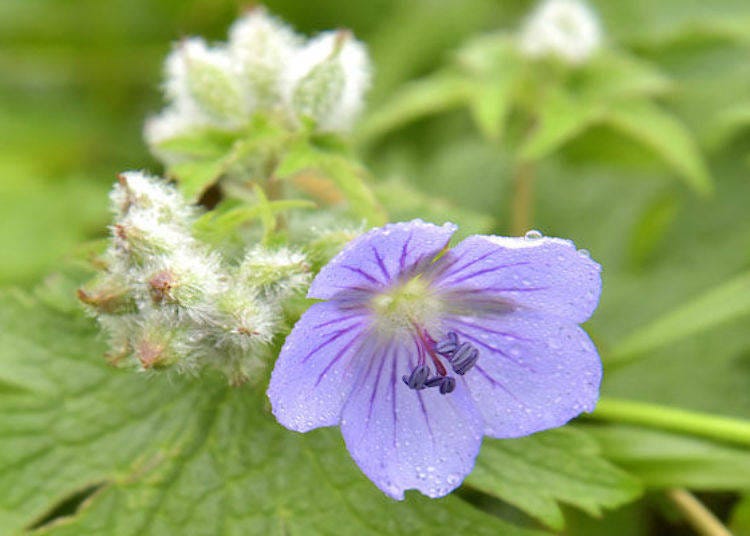
“The fuzzy ball behind the flower is the bud. On rainy days like today, the dew on it gives it a pretty appearance. Actually, this flower is better viewed on a foggy rather than a sunny day. The dew sparkles like jewels, adding to the pleasure!” explains Ms. Sasaka.
Her love for the flowers apparent in her explanations was entertaining to listen to!
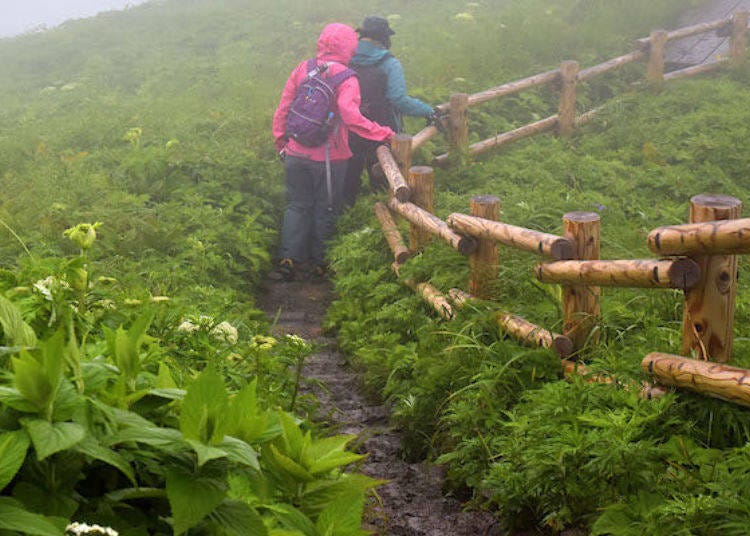
Normally at this spot the view is one of fields of flowers spreading down the slope, the sea, and Nekoiwa, but on this day everything was hidden by fog.
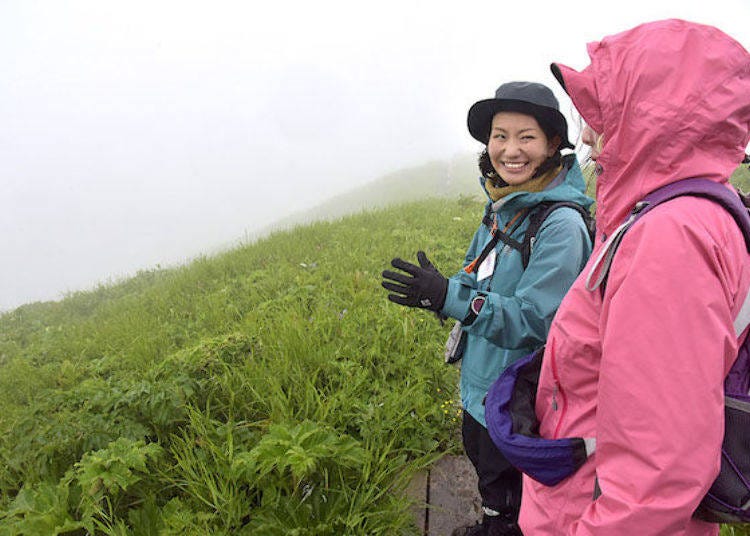
Normally it is possible to see Nekoiwa, a rock resembling a cat complete with ears and tail.
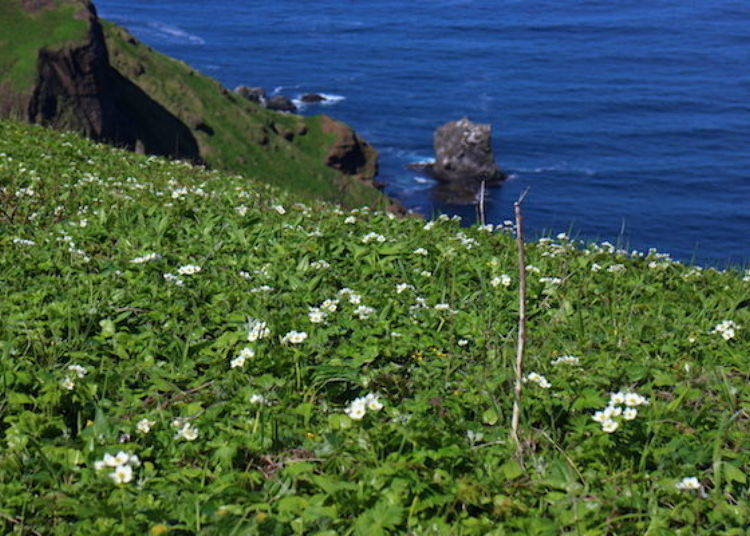
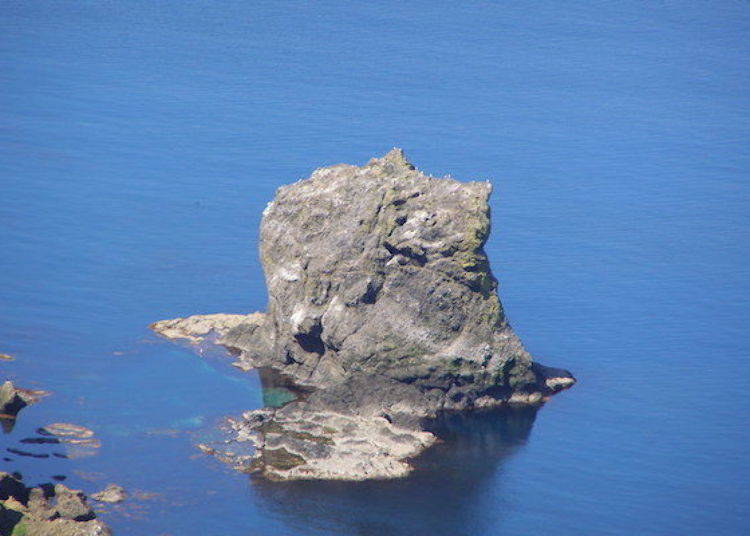
Moving on from Nekoiwa, Ms. Sasaka suddenly said, “Look at this,” pointing to a dark, purple flower. This is the Rebunsou (Oxytropis megalantha), which can be found nowhere else on earth but here on Rebun Island.
“Many flowers are having Rebun in their names, but most of those that bloom in other areas are slightly different from this unique species. But this is the original as it can only be found here on Rebun Island.”
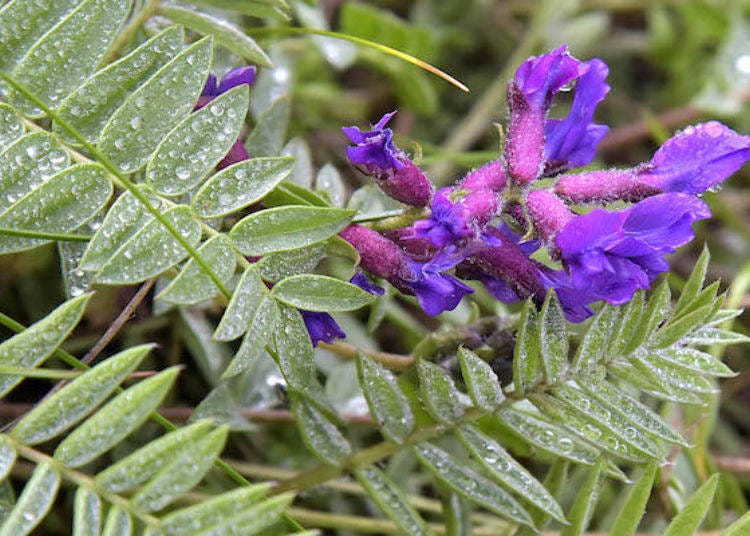
The Rebunatsumorisou (Rebun Lady’s Slipper Orchid) is also unique to Rebun Island, but they are not to be found along the Flower Road as they are located in fields on the north side of the island.
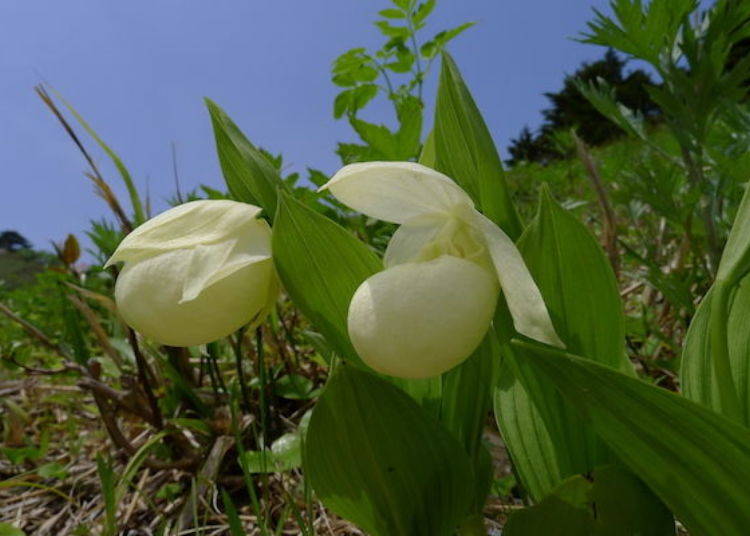
Ms. Sasaka explained that the Rebun Lady’s Slipper Orchid has a unique flower that resembles a round balloon. A white section opens like wings, and rather than hide, the petals act as “frames.” She knows her stuff!

We arrived at Kinbai Valley, the turnaround point, while engrossed in conversation about why there were so many alpine flowers growing on Rebun Island. The valley gets its name from the “kinbai” in Rebukinbaisou (Trollius ledebourii) as it is here that the dazzling yellow flower is found.
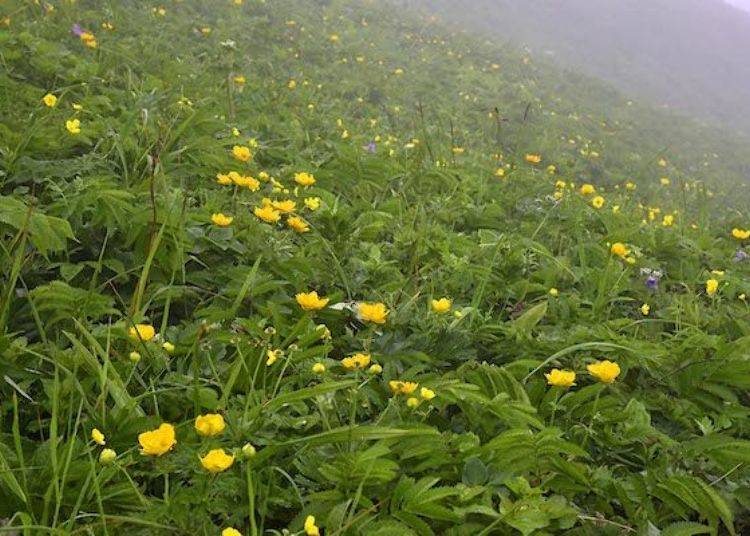
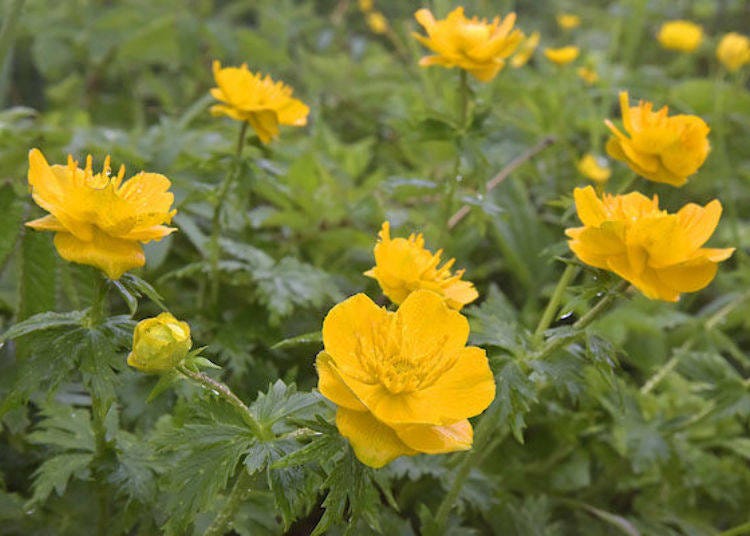

From here, we returned along the way that we came, and our trekking through the flowers came to an end. Even though we returned along the same way that we came, it afforded a different view that was equally fascinating. Whether you have a guide or not makes a big difference. Her explanations increased my knowledge and satisfied my curiosity.
We parted company with our guide, and as the sun came out during the evening hours, we went to the Momoiwa Observatory once again and immersed ourselves in the beautiful view spread out before us.

Splendid view! Most exhilarating! Rebun Island trekking course is a great way to enjoy the beautiful scenery and flowers. When making plans, be sure to include a guide who will definitely make your visit a most memorable one.
※The times when flowers bloom mentioned in this article may differ according to weather conditions.
-
Rebun Hana Guide Club礼文はなガイドクラブ
- Address 〒097-1201 北海道礼文郡礼文町香深字尺忍1-10/Syakunin 1-10, Kafuka, Rebun-cho Rebun-gun, Hokkaido, 097-1201, Japan
- Phone Number 0163-89-6330
Open: April to September
Hours: 9:00 a.m. ~ 5:00 p.m.
Closed: open daily during the open season
Guide fee: Half-day private plan (4 hours) 15,000 yen (tax included) for two people
Written by Fumi
※Unless explicitly mentioned, all prices include tax.
*Prices and options mentioned are subject to change.
*Unless stated otherwise, all prices include tax.
Popular Tours & Activitiess
Recommended places for you
-
Appealing

Rukku and Uohei
Izakaya
Sapporo / Chitose
-

Farm Tomita
Other Nature
Furano / Biei / Sounkyo
-
Appealing

Shirogane Blue Pond (Aoiike)
Rivers, Lakes & Canyons
Furano / Biei / Sounkyo
-
Appealing

Shiroi Koibito Park
Theme Parks
Sapporo / Chitose
-
Appealing

Sapporo Ramen Yokocho
Ramen
Sapporo / Chitose
-
Appealing

Mt. Hakodate Observatory
Forests & Mountains
Hakodate
-
Ad

Smart Ways to Avoid Crowds and Enjoy a Safe, Comfortable Trip to Otaru.
-

7 Iconic Hokkaido locations that will make your Instagram shine
by: Himanshi Shah
-

Expert-Recommended: 9 Hakodate Hotels Serving Up the Best Breakfasts in Town
by: Nobuka Kawashima
-

Great Local Eats: 5 Expert-Recommended Local Chain Restaurants in Hakodate
by: Nobuka Kawashima
-

BIGGEST SALE ALERT! SATUDORA Tax-Free Winter Sale: Stack Coupons for Massive Savings!
by: Guest Contributor
-
Ad

Sapporo SATUDORA Shopping Guide: Get Souvenirs, Medicine & More at This Iconic Drugstore (Special Deal Inside!)
-

Sapporo Outlets: Ultimate Guide to Hokkaido's Mitsui and Chitose Outlet Malls
-

6 Most Scenic Spots Around Mount Yotei, Hokkaido: Gorgeous Sunflowers & More!
-

These 18 Things to Do in Hakodate Will Make You Fall in Love With the Northern Wonderland
by: Guest Contributor
-

Getting From Hokkaido's New Chitose Airport to Niseko Japan's Premier Ski Resorts (Train, Bus, Rental, Taxi)
-

8 Unfamiliar (But Totally Normal) Customs in Japan!
-

Niseko Onsen: 10 Best Hot Springs in Japan's Wild North With Jaw-Dropping Views
by: Guest Contributor
- #best sushi hokkaido
- #things to do hokkaido
- #best ramen sapporo
- #what to bring to japan
- #new years in tokyo
- #what to buy in ameyoko
- #japanese nail trends
- #what to do in odaiba
- #onsen tattoo friendly tokyo
- #daiso
- #best sweets otaru
- #japanese fashion culture
- #best nature furano
- #japanese convenience store snacks
- #best japanese soft drinks















